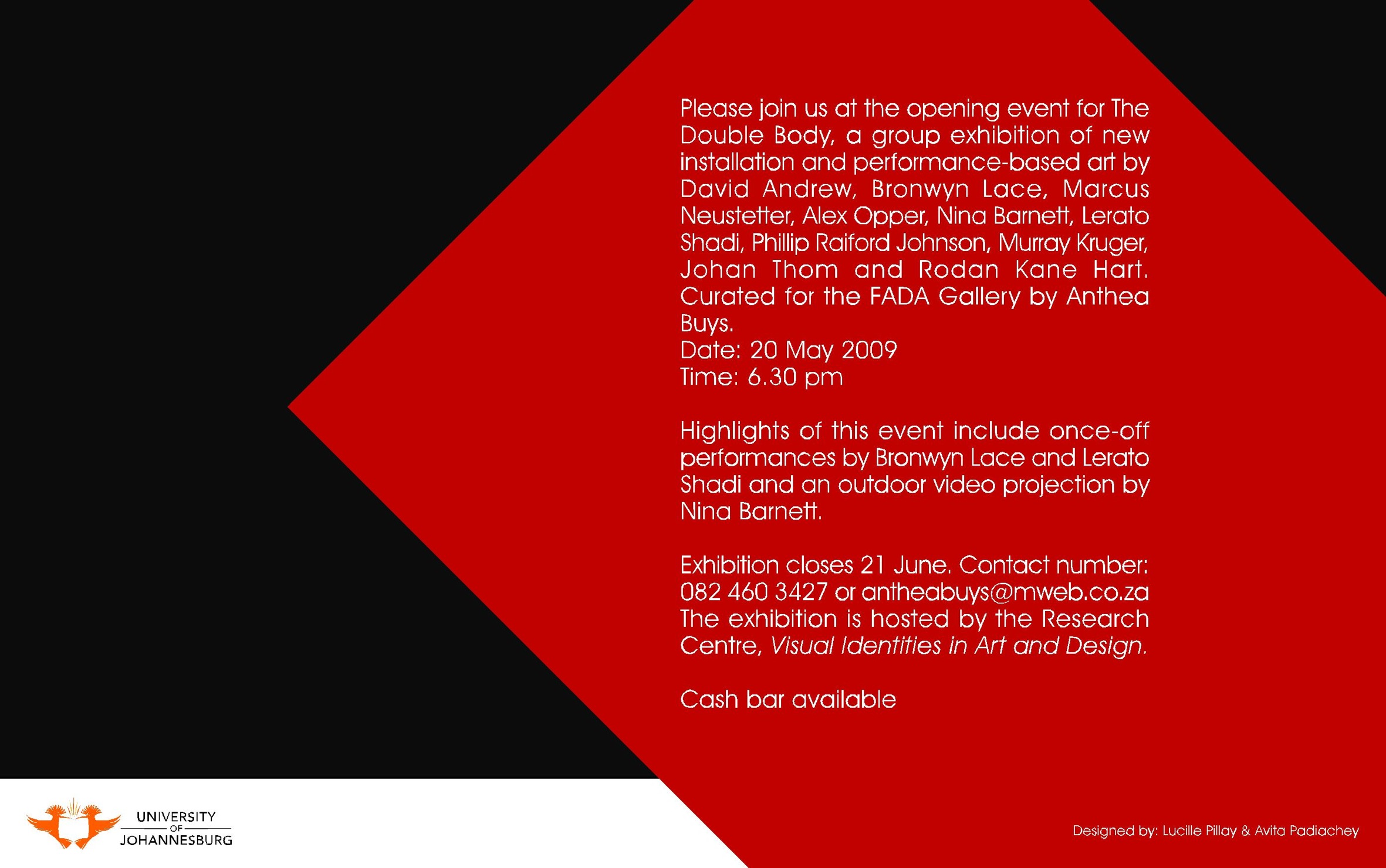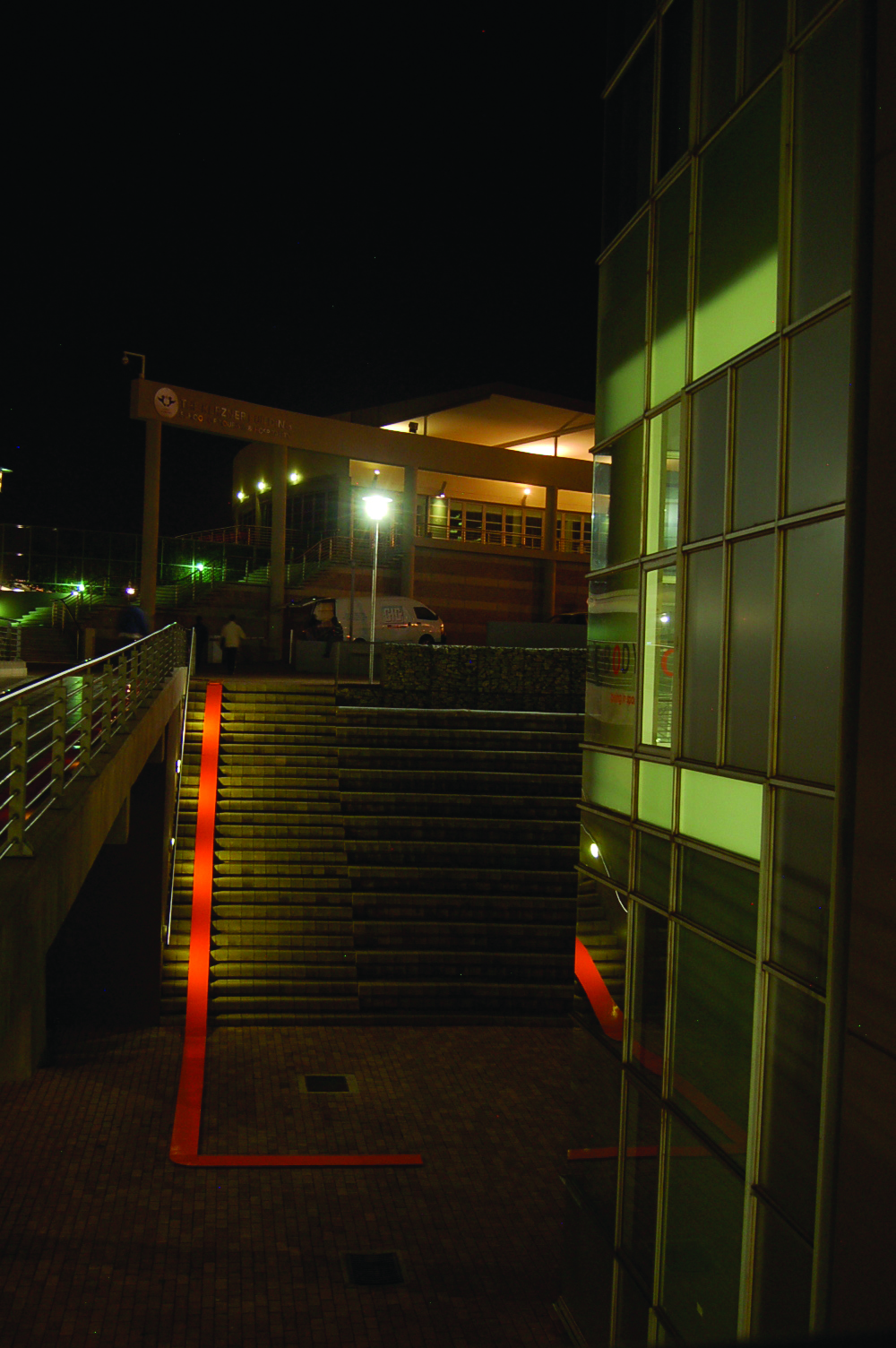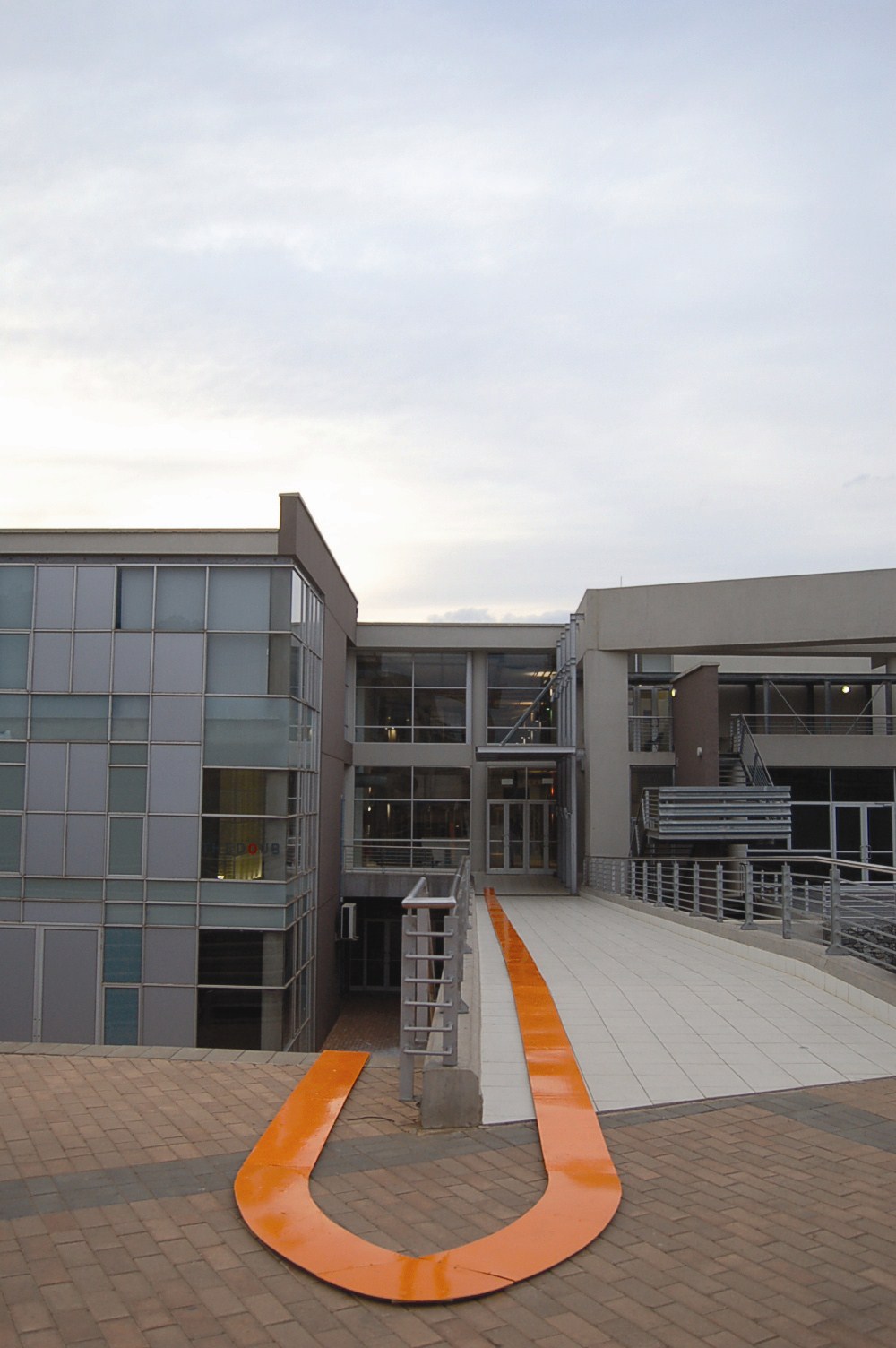THE DOUBLE BODY// being in Space
Exhibition curated by Anthea Buys
The Double Body: Being in Space is an exhibition of installation and performance art by South African artists that explores the implicit relationship between physical performance, or presence, and architectural spaces. Drawing from a theoretical tradition, rooted in minimalism, that makes a case for a corporeal ‘knowledge’ of objects and space, the curator, Anthea Buys, explores how the body articulates itself in space and develops a sense of place; how installation environments may bear the traces of bodily presences; and the different levels at which a viewer might access and experience an artwork.
Buys treats the notion of architectural space broadly, suggesting that non-functional spatial interventions and artistic gestures which respond to a formally architectural environment are themselves architectural works. She also proposes, through constructing a physically immersive network of installation environments, that the very notion of architectural space is derived directly in relation to the bodies that would inhabit, look at, move through or construct it. There is a strong precedent in recent exhibition-making for the blurring of distinctions between architecture ‒ as the vessel that would contain art ‒ and the installation artwork that cohabits with it, or exists under its watch. The exhibition Psycho Buildings: Artists Take on Architecture, curated by Ralph Rugoff for London’s Hayward Gallery in 2008, provided a frame within which installation works could challenge the architectural sanctity of the gallery space, whether by working on a scale that unsettled the relationship of spatial subordination of the artwork to its exhibition space, or by actively adding to or destroying existing architectural elements in the gallery. Psycho Buildings arrived as an innovative utterance in contemporary curating, but its historical roots are entwined in the minimalist avant-garde spatial practices of artists such as Robert Smithson and Gordon Matta-Clark, both of whom revolutionised the relationship between the space of the artwork and that of its containing building or alternative environment.
The Double Body owes a debt to Rugoff’s exhibition for its concentrated attention to architectural spaces, but even more so to minimalism, which is firmly rooted philosophically in continental phenomenology – the study of experience.
Although most of the works on The Double Body do not betray any formal nostalgia for minimalist or postminimalist sculpture and installation, they do reiterate what is central to both moments in the history of art: the elevation of the subject. The latter is not just a cerebral subject, capable of locating a work conceptually, but a sensorially aware and susceptible agent who experiences and responds to an artwork, or any other object or environment, corporally. This is an exhibition centred on the body in that each work included creates a unique sensory, spatial experience for the viewer. This can be effected through a gesture as small as inviting the viewer to peer into the work in response to its smallness, as is the case with Marcus Neustetter’s maquette for an artists’ telescope titled The Observatory 1 (2009), or as grand as dramatically altering movement though the gallery by sealing off the ground and first-floor levels from one another, as Alexander Opper does in his architectural intervention Auseinandersetzung (2009). The two performances included in the show, Bronwyn Lace’s Verticality, Height and Mass (2009) and Lerato Shadi’s Hema (2008), reiterate the connection between bodily presence and space. Lace uses a matrix of vertical and horizontal lines plotted on the gallery wall and nylon thread to manipulate her 80 fishing line sinkers that together match her body weight. In Hema, as Shadi inflates balloons with her breath and lets them fall from the roof of the gallery, the balloons become vessels in which something of the artist's body is contained – their construction is entirely contingent upon a corporeal act – and in this way they are architectural objects.
In 1991, years after the heyday of minimalism, French philosopher Henri Lefebvre highlighted the necessity of the corporeal encounter for the realisation of social space. He (Lefebre 1991:405) notes that, [t]he whole of (social) space proceeds from the body, even though it so metamorphoses the body that it may forget it altogether – even though it may separate itself from the body so radically as to kill it. ... Within the body itself, spatially considered, the successive levels constituted by the senses (from the sense of smell to sight, treated as different within a differentiated field) prefigure the layers of social space and their interconnections. The passive body (the senses) and the active body (labour) converge in space.



























